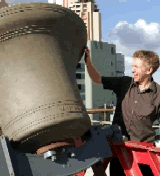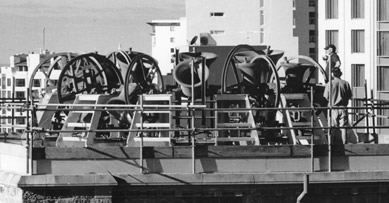Dr Hugh Hunt, a member of the Dynamics and Vibration Group, recently had the unusual task of assessing whether the bell tower on top of an Australian cathedral would vibrate when the bells were rung for the first time.

The tests were part of ongoing work, first started in 1906, to complete St John's Cathedral in Brisbane.
Hugh was flown out to conduct tests to see if the newly-completed central tower would be suitable for ringing bells. The various temporary bell towers, which had previously been in place over the last 100 years, had not been rigid enough to allow the bells to be rung properly. Movement of around 1mm is easily perceptible and anything above 10mm makes bell-ringing virtually impossible. A construction worker rang a 632kg bell while Hugh tested the new tower by taking measurements using accelerometers.

A further concern is that any substantial movement will damage the building's masonry structure including its massive vaulted sanctuary. Professor Jacques Heyman has also been involved in his capacity as an expert on the integrity of stone buildings and he has been advising St John's for the last ten years.
All ten bells now ring in unison for the first time in St John's 100 year history and the tower did not show any sign of movement. This is the result that everyone was hoping for - except for the three unhappy students trying to revise for their exams in a nearby high-rise, who found the 82 decibel sound level rather distracting.

